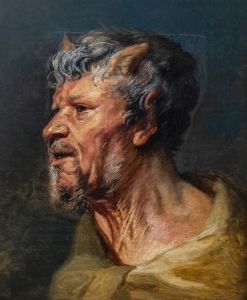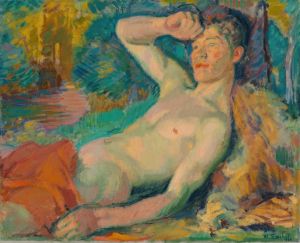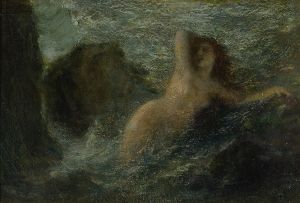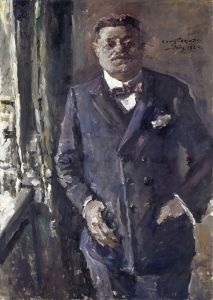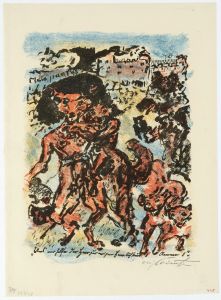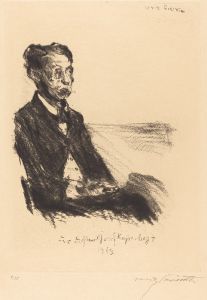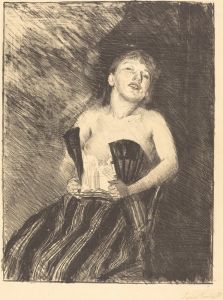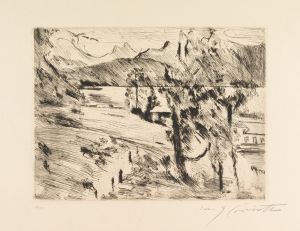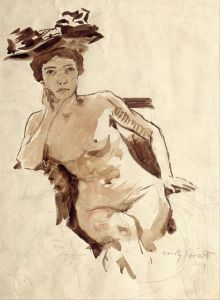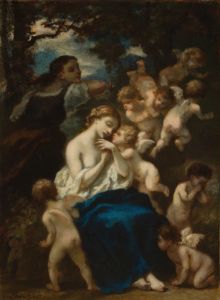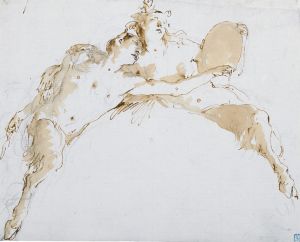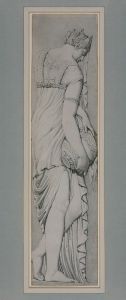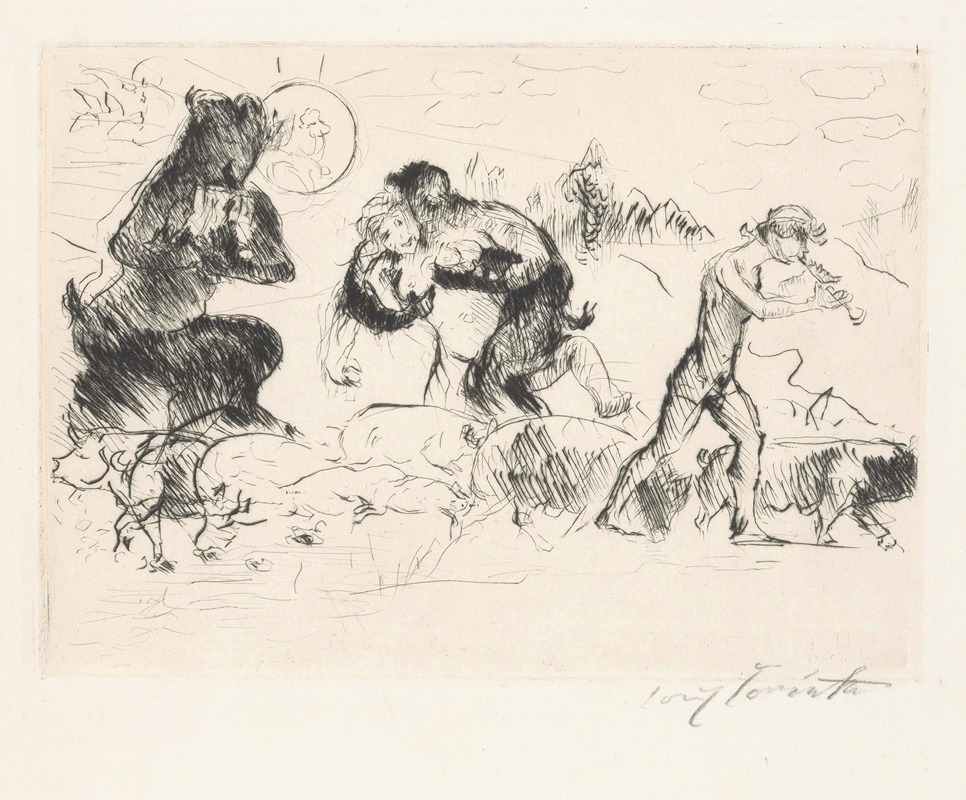
Saters, een nimf, een faun en een toom varkens
A hand-painted replica of Lovis Corinth’s masterpiece Saters, een nimf, een faun en een toom varkens, meticulously crafted by professional artists to capture the true essence of the original. Each piece is created with museum-quality canvas and rare mineral pigments, carefully painted by experienced artists with delicate brushstrokes and rich, layered colors to perfectly recreate the texture of the original artwork. Unlike machine-printed reproductions, this hand-painted version brings the painting to life, infused with the artist’s emotions and skill in every stroke. Whether for personal collection or home decoration, it instantly elevates the artistic atmosphere of any space.
Lovis Corinth was a prominent German painter and printmaker whose work bridged the transition from Impressionism to Expressionism in the late 19th and early 20th centuries. Born on July 21, 1858, in Tapiau, East Prussia (now Gvardeysk, Russia), Corinth became known for his vigorous brushwork and vibrant use of color. He studied at the Academy of Fine Arts in Munich and later in Paris, where he was influenced by the works of the French Impressionists.
One of Corinth's notable works is "Saters, een nimf, een faun en een toom varkens" (translated as "Satyrs, a Nymph, a Faun, and a Herd of Pigs"). This painting exemplifies Corinth's fascination with mythological themes and his ability to blend classical subjects with a modern artistic approach. The painting captures a lively and dynamic scene featuring mythological creatures, which were common motifs in Corinth's oeuvre.
The composition of the painting is characterized by its energetic and somewhat chaotic arrangement of figures. Satyrs and a faun, creatures from Greek mythology known for their association with Dionysian revelry and nature, are depicted alongside a nymph, a female spirit typically associated with natural features like rivers and forests. The inclusion of a herd of pigs adds a rustic and earthy element to the scene, grounding the mythological figures in a more pastoral setting.
Corinth's use of color and brushwork in this painting is particularly noteworthy. He employs a rich palette, with bold and contrasting colors that enhance the vibrancy of the scene. The brushstrokes are loose and expressive, a hallmark of Corinth's style, which allows for a sense of movement and spontaneity within the composition. This approach reflects the influence of Impressionism, while the emotional intensity and dramatic contrasts hint at the emerging Expressionist movement.
Throughout his career, Corinth explored a wide range of subjects, including portraits, landscapes, and historical scenes, but his mythological works stand out for their imaginative interpretations and dynamic execution. "Saters, een nimf, een faun en een toom varkens" is a testament to Corinth's ability to infuse classical themes with a modern sensibility, making them accessible and engaging to contemporary audiences.
Lovis Corinth's contribution to art extends beyond his paintings; he was also a significant figure in the Berlin Secession, an art movement that sought to challenge the conservative art establishment in Germany. His work and leadership within this group helped pave the way for the acceptance of modern art in Germany.
Corinth continued to paint and exhibit his work until his death on July 17, 1925. His legacy is preserved in numerous collections and museums worldwide, where his paintings continue to be celebrated for their technical mastery and emotional depth. "Saters, een nimf, een faun en een toom varkens" remains a vivid example of Corinth's artistic vision and his ability to bring mythological narratives to life through his distinctive style.





